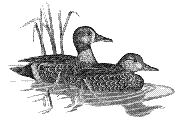United States Fish and Wildlife Service

Waterfowl Management Handbook
Date of this Version
January 1992
Abstract
Low duck populations in the late 1980’s and early 1990’s prompted unprecedented action from the natural resources community. Agencies and private organizations that were traditionally involved with waterfowl management redoubled their efforts, in the process forming partnerships with groups that were relatively new to the waterfowl management arena. Many resource managers who have had relatively little experience with waterfowl habitat management now find themselves expected to manage duck populations for increased production. Decades of waterfowl research and management experience have provided them with many potential management tools. Unfortunately, the absence of general guidelines for directing waterfowl management actions has put these newcomers to the field at a decided disadvantage. This is particularly true for managers who reside outside of the northern Great Plains, a region that has been the focus of most research on breeding ducks.
This leaflet is intended to orient managers to approaches for identifying the factors that limit duck production. The concepts presented here will assist in making logical management choices in regions where little is known about breeding ducks and their habitat. Although it may serve as interim guidance, this leaflet is not intended to substitute for rigorous, scientific research on waterfowl biology. Readers are urged to use this leaflet as a starting point from which to gather additional knowledge using companion leaflets and technical publications.


Comments
Published in Diana H. Cross and Paul Vohs (eds.) Waterfowl Management Handbook. Fort Collins, CO: U.S. Fish and Wildlife Service, 1988. Online at http://www.nwrc.usgs.gov/wdb/pub/wmh/contents.html